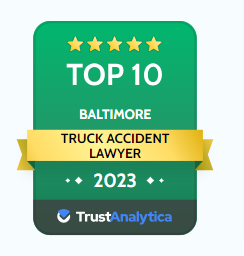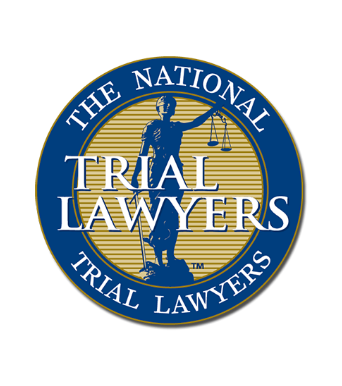College Park, MD Pedestrian Accident Lawyer
Pedestrian accidents are scary experiences. Victims can have a lot of frantic thoughts going on in their heads right after they happen. “Am I hurt?” “How bad is it?” “What is the cost of recovery?” “Why did this happen?” all of those thoughts and more may go through a pedestrian’s mind right after an injury. Moreover, pedestrians may be incredibly frustrated in the weeks and months following their accident because of the injury recovery process and new details coming to light about their crash. This can be especially true if it starts to look like the accident was the result of someone being careless.
If you are looking to hold those who injured you responsible under the law, we can help you out. Our lawyers have the experience, professionalism, and drive to effectively represent you in court and fight nonstop for the financial payout you need and deserve after an accident.
For a free, no-obligation discussion of your claim, call the team of pedestrian accident lawyers with Rice, Murtha & Psoras at (410) 694-7291.
Injuries from Pedestrian Accidents in College Park, MD
There are many different injuries that a pedestrian could sustain in a crash. What injuries you sustain in a pedestrian accident are actually very important to your case because they play a major role in calculating what you ask for in damages when you file your lawsuit with the court.
Broken Bones
Pedestrians struck by motor vehicles frequently suffer fractures as a result. Broken arms, legs, ribcages, and more are common in pedestrian accidents. Virtually all fractures will require a sling, splint, or cast to properly heal. More severe breaks, such as compound fractures, may require other things like surgery in order to make a full recovery.
Head Injuries
Traumatic Brain injuries (TBIs) are caused by hard blows to the head that damage the brain. These injuries have incredibly serious consequences. Even “mild” TBIs, more commonly called concussions, have nasty effects like memory loss, mood swings, and sensitivity to light and sound. Moreover, prior concussions make the effects of subsequent ones exponentially worse.
More severe TBIs can lead to loss of basic functions, paralysis, or even death.
Neck and Back Injuries
Neck and back injuries are also very common in pedestrian accidents. A common neck injury in pedestrian accidents is whiplash, which happens when the neck violently jerks back and forth because of an impact.
If the neck or back is injured, there is a chance that the spinal column and cord get hurt. This could lead to nerve damage ranging from numbness to chronic pain to partial or full paralysis.
Bruises
Hard impacts can also result in bruising when blood vessels are crushed beneath the skin. Normally, bruises will heal on their own, but severe bruising may be indicative of something more serious like internal bleeding or organ damage.
Damages in College Park, MD Pedestrian Accidents
The ultimate goal of any personal injury case, including pedestrian accident lawsuits, is to get damages from the defendant. The purpose behind damages is to restore the victim to how their life was before the crash or, at least, get as close as possible to that point. Due to the nature of the plaintiff’s injuries, this is often not literally possible, so financial compensation is used as a proxy.
There are three main categories of damages in civil cases: economic damages, non-economic damages, and punitive damages.
Economic Damages
Economic damages is usually the easiest category of damages to understand and prove. These damages are based on things with quickly discernable value. For example, the cost of emergency and long-term medical care falls under the category of economic damages.
Also under economic damages is compensation for any lost wages or income. If you had to take a lot of time off work to recover and were not getting paid, you can get damages based on what you could have been earning during that time. Additionally, if you have to take a job that pays less because of your injuries, that can factor into the compensation you receive. Finally, if you are not able to work anymore because of the accident, you can get damages based on what you were expected to earn for the rest of your working career.
Non-Economic Damages
In contrast to economic damages, non-economic damages are based on less immediately tangible things. A very common item in non-economic damages is “pain and suffering.” When you allege that your accident caused you pain and suffering, you are seeking damages for the pain your injuries caused. So, while you may want economic damages for prescription pain management medication, economic damages will compensate you for the pain itself.
Also included under the umbrella of non-economic damages are the mental effects of your accident. For example, if your pedestrian accident resulted in a post-traumatic stress disorder diagnosis, you can be entitled to compensation for the effects of that condition.
Since there is no straightforward value for non-economic damages, you will need to prove their value to the court with the help of our attorneys.
Punitive Damages
Punitive damages are different from economic or non-economic damages because they are not based on your condition. Instead, they are awarded in situations where the actions of the defendant warrant them. The idea is to punish defendants who have done something particularly foul. You will need to prove that the defendant was more than merely negligent in order to get punitive damages. This can be tricky to do, so you should talk about seeking these damages with our pedestrian accident lawyers.
Chat with Our College Park, MD Pedestrian Accident Lawyers Right Now
Our pedestrian accident legal team is only a phone call away when you contact Rice, Murtha & Psoras at (410) 694-7291.













